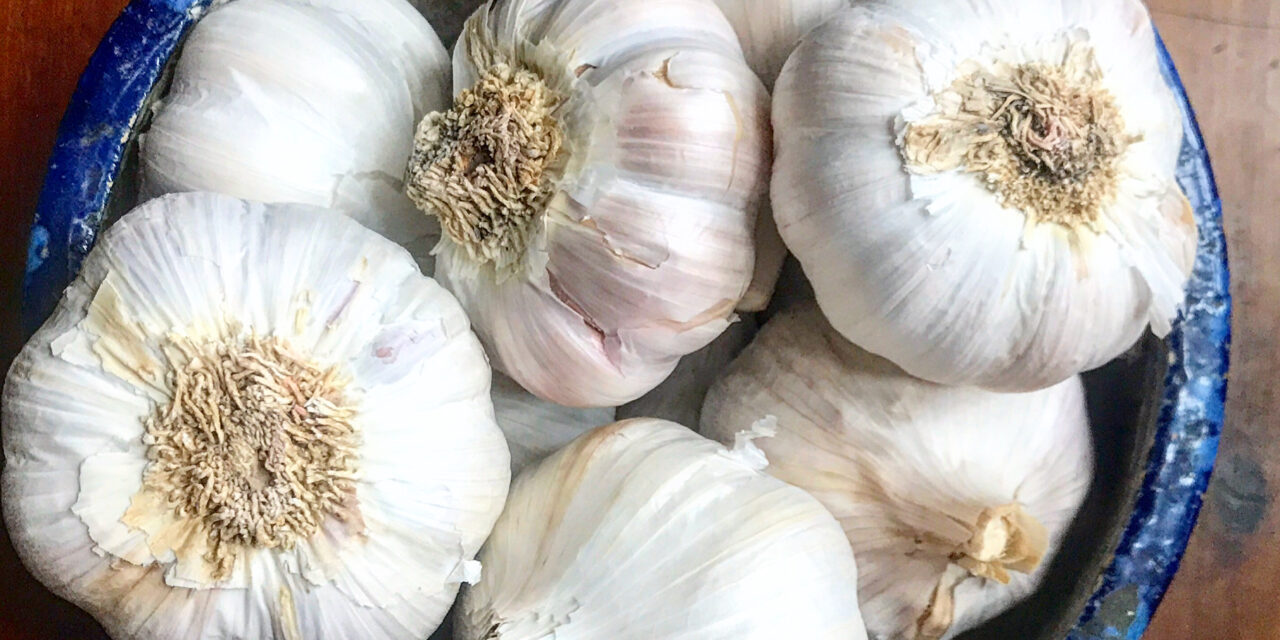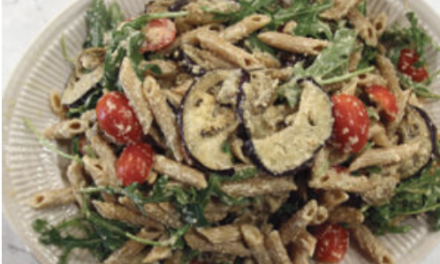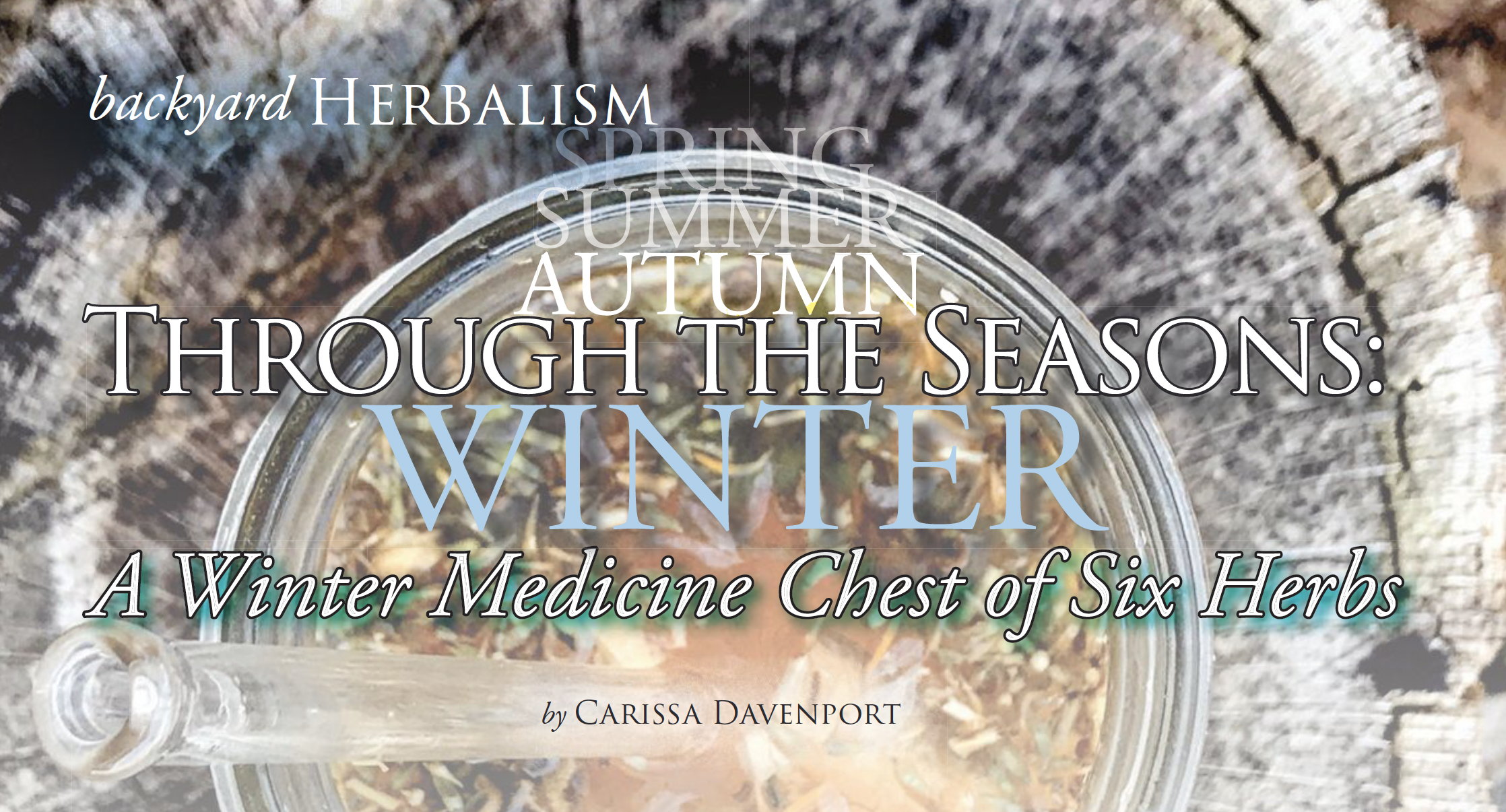
Please Note: The information in this article is intended for educational purposes only. Always consult your physician before beginning any herbal protocols.
by Carissa Davenport.
Winter calls to mind visions of hot tea by a roaring fire, snowy days, and snuggly blankets. And perhaps, after three seasons of exploring herbs together, winter will also call forth images of brimming pantries with jars full of medicinal herbs awaiting use! Whether or not we can count on those cozy snowy days remains to be seen. But we can certainly count on our classic winter herbs to bring us that inner warmth and wellness we seek.
If you’ve been following this series over the seasons, it should be clear by now why herbalism is referred to as “the people’s medicine.” This practice, working intentionally with plants to feel healthy and vital, is simpler than it often seems. Herbalism doesn’t live in textbooks or classrooms. It lives in kitchens, gardens, and our very hands. Through practice, trial and error, creativity, and trust in nature, herbalism comes alive and becomes personal.
For those who may have missed the earlier editions of “Herbalism through the Seasons,” fear not. Winter, with its chilly temps and tenacious germs practically requires herbal exploration. Or perhaps you read earlier editions and are still asking yourself, “Where do I even begin?” Here’s a bit of time-worn advice that herbalists across cultures will swear by: it’s better to know a handful of herbs well than to have a surface knowledge of many. Or, in the words of the famous French herbalist Maurice Messegue, from his autobiography Of People and Plants, “A single plant is a medicine chest unto itself.”
Without having intended to, most people already have a virtual medicine chest in their spice racks. Common culinary herbs like garlic and oregano happen to be as medicinal as they are flavorful. Or perhaps more so! Following the sage advice of Messegue, here are six herbs worth keeping in stock this winter. Should these common plants not already sit upon your kitchen shelves, they’ll be easy to find in any local grocer or health food shop. Each is truly a medicine chest in itself, adaptable in use, and quite effective in speeding recovery from the colds, flus, and chills that often accompany winter.
Garlic
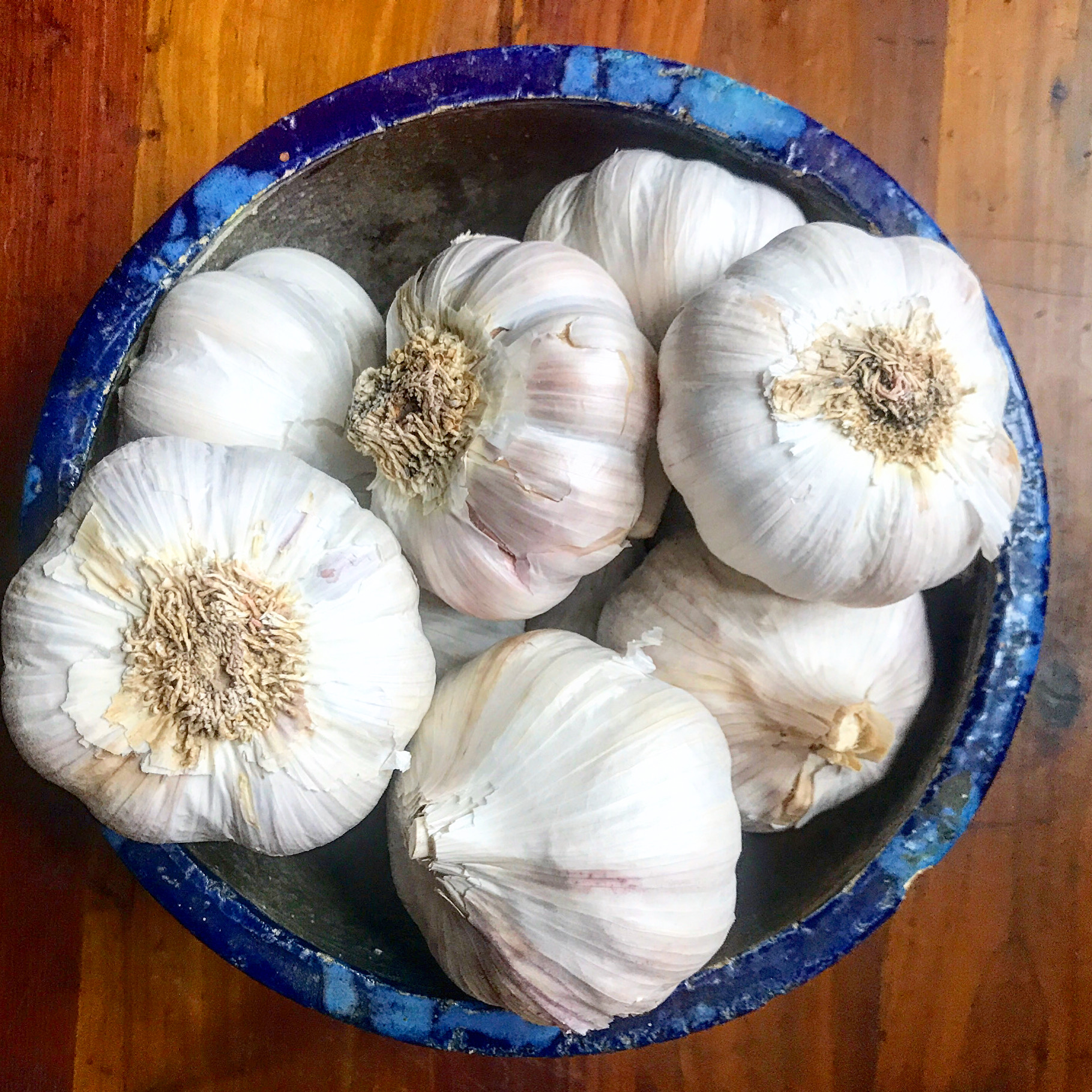 You know that question, “If you were stuck on an island, what’s the one thing you’d bring with you?” Garlic is a fail-safe choice. (If you wish to survive until being rescued, that is.) In fact, during WWII garlic was known as “Russian penicillin” and was relied upon to treat a soldier’s wounds after antibiotics ran out. Who doesn’t have a head or two of this stinky medicine in their kitchen? Garlic is easily the most accessible and useful herb there is! Its medicinal properties are wide-ranging: it is a broad-spectrum antiseptic, an expectorant (expels mucus from the respiratory system), a circulatory stimulant (moves blood, warms you up), a hypotensive (lowers blood pressure) and a diaphoretic (supports a fever by promoting perspiration). The fact that it adds a punch of flavor to food makes it a daily no-brainer. By simply eating garlic you’re getting those medicinal benefits. Even more so if it’s fresh. Fresh crushed garlic contains the compound Allicin, which is responsible for most of its medicinal effects. So the best way to clear up a respiratory infection or get that cardiovascular support is to ingest a fresh clove every day. Grate it into soup or sauces for a quick fix. Or mix chopped garlic with honey for a daily spoonful of broad-spectrum herbal support. It’s surprisingly delicious!
You know that question, “If you were stuck on an island, what’s the one thing you’d bring with you?” Garlic is a fail-safe choice. (If you wish to survive until being rescued, that is.) In fact, during WWII garlic was known as “Russian penicillin” and was relied upon to treat a soldier’s wounds after antibiotics ran out. Who doesn’t have a head or two of this stinky medicine in their kitchen? Garlic is easily the most accessible and useful herb there is! Its medicinal properties are wide-ranging: it is a broad-spectrum antiseptic, an expectorant (expels mucus from the respiratory system), a circulatory stimulant (moves blood, warms you up), a hypotensive (lowers blood pressure) and a diaphoretic (supports a fever by promoting perspiration). The fact that it adds a punch of flavor to food makes it a daily no-brainer. By simply eating garlic you’re getting those medicinal benefits. Even more so if it’s fresh. Fresh crushed garlic contains the compound Allicin, which is responsible for most of its medicinal effects. So the best way to clear up a respiratory infection or get that cardiovascular support is to ingest a fresh clove every day. Grate it into soup or sauces for a quick fix. Or mix chopped garlic with honey for a daily spoonful of broad-spectrum herbal support. It’s surprisingly delicious!
Cough Soothing Honey
A traditional kitchen remedy to soothe and calm coughs. Ingredients: Garlic, Onion, Honey Crush a head of garlic cloves and chop an equal amount of onion. Local and organic is best—it will be freshest, and full of medicinal compounds. Add those chopped veggies to a pint-sized jar and just cover with honey. Set jar in a shallow pot of water to double boil honey for about 10 minutes. Leave the lid off for safety. Once the honey seems sufficiently heated remove from heat. Strain honey through a cheese cloth to remove veggie bits. Store honey in the fridge and take by the teaspoon as needed.
Sage

Sage’s medicinal properties make themselves known through its earthy, piney flavor. The compounds responsible for sage’s flavor lend it their astringent and antiseptic powers. Because of this, sage is a classic remedy for soothing inflammation of the mouth and throat. Brew up a strong sage tea and add a pinch of salt for a mouth rinse and throat gargle that will speed up the healing of gingivitis, mouth ulcers, laryngitis, and tonsilitis. That same sage tea also makes a wonderful wound wash. Astringent herbs tighten tissues, reducing inflammation and pain, and creating a barrier against infection. A last note on sage—that drying effect has long been a friend to nursing mothers ready to wean their little ones. Not ready to dry up your supply? Give sage a rest until you are!
Onion
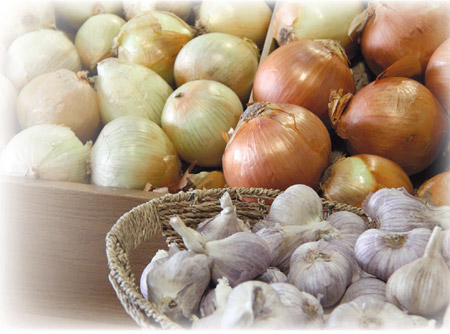
What is more humble and common than the onion? Think about it; onions are essential to nearly every global cuisine, so much so that most would never stop to wonder why. Sure, they’re delicious. But they’re just as worthy of the term “superfood” as any other grocery store superstar. A 2007 article in the American Journal of Clinical Nutrition cited the numerous benefits of consuming onions regularly, especially raw. They are known to prevent heart disease and stroke, while gently lowering blood pressure. With heart disease impacting over 16 million Americans, that’s reason enough to keep onions on the menu daily.
As for acute health support, onions are a stellar decongestant. Any nose within a meter of a raw onion knows that! Chew on a slice of raw onion mixed with honey to send those benefits down into the lungs. Onions’ ability to thin and expel mucous secretions make them yet another unlikely kitchen ally for the all-too-likely winter colds and flus. And at the very least, incorporate onions into recovery foods to benefit from their immune-supportive nutrients like vitamins A, C, and zinc.
Ginger
 Also common in the kitchen, ginger is so much more than culinary. But for the full effect, ditch dried ginger and tea bags in favor of the fresh root. It’ll soon be a culinary staple and is much more effective medicinally. Ginger’s primary medicinal benefit is as a “stimulating diaphoretic.” Like garlic, these plants are pungent and rich in essential oils. This means that ginger stimulates blood flow, especially to the periphery, allowing a fever to run its natural course while helping your body expel that excess heat. This makes ginger a number one ally in speeding your recovery from infections as well as keeping you warm from nose to toes all winter! Another effect of its stimulating properties is the expulsion of intestinal gas. Keep some ginger chews on hand for the coming holidays, to help you cope with a gurgling tummy that’s full to capacity. For the more adventurous home herbalist, a hot ginger brew is not only a cold and flu staple, it also serves as a stimulating foot bath to banish a winter chill.
Also common in the kitchen, ginger is so much more than culinary. But for the full effect, ditch dried ginger and tea bags in favor of the fresh root. It’ll soon be a culinary staple and is much more effective medicinally. Ginger’s primary medicinal benefit is as a “stimulating diaphoretic.” Like garlic, these plants are pungent and rich in essential oils. This means that ginger stimulates blood flow, especially to the periphery, allowing a fever to run its natural course while helping your body expel that excess heat. This makes ginger a number one ally in speeding your recovery from infections as well as keeping you warm from nose to toes all winter! Another effect of its stimulating properties is the expulsion of intestinal gas. Keep some ginger chews on hand for the coming holidays, to help you cope with a gurgling tummy that’s full to capacity. For the more adventurous home herbalist, a hot ginger brew is not only a cold and flu staple, it also serves as a stimulating foot bath to banish a winter chill.
Recovery Lemonade
A surprisingly delicious medicinal beverage to sip on at first signs of cold and flu, and until you’re well! Ingredients: Ginger, Garlic, Onion, Honey, Lemon Chop or grate one inch of fresh ginger root and 2 to 4 cloves of garlic. Add to a quart-sized mason jar along with the juice of a half to a whole a lemon, based on preference. Fill mason jar with just boiled water and close the lid for a 20-minute steep. Strain tea and add honey to taste. You can add extra lemon, too. Kids go crazy for this antimicrobial drink, and they’d never guess they’re sipping garlic!
Oregano
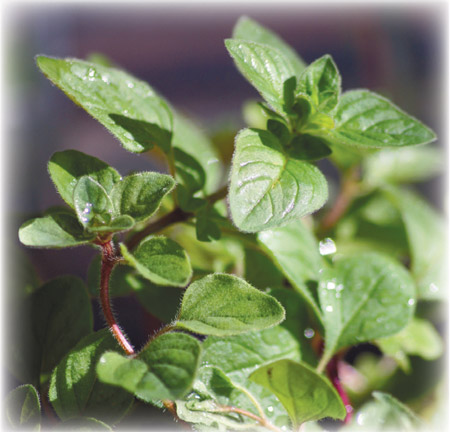 Known to be a favorite medicinal of Hippocrates, oregano is not just for pasta sauce. (Although, in the words of the same philosopher, “let thy food be thy medicine, and thy medicine be thy food”!) It’s a powerful antibacterial, antiviral, and antiseptic herb with potent antioxidant properties. Oregano has a long history as a kitchen medicine, turned to by herbalist in cases of respiratory and digestive illness. Why is that so? Well, oregano is packed with medicinal essential oils which are responsible for its antimicrobial superpowers. These essential oils have an affinity for the tissues in the lungs and stomach, where they can easily fight off pesky germs. Get your medicinal dose of oregano by sipping on a mild tea with honey and lemon. Or try your hand at a tincture. Simply pack a jar with fresh oregano, cover with vodka and steep for one month. Strain, and take 2 milliliters three times daily in water. Another option is sourcing oil of oregano capsules, for a quite potent infection-fighting dose.
Known to be a favorite medicinal of Hippocrates, oregano is not just for pasta sauce. (Although, in the words of the same philosopher, “let thy food be thy medicine, and thy medicine be thy food”!) It’s a powerful antibacterial, antiviral, and antiseptic herb with potent antioxidant properties. Oregano has a long history as a kitchen medicine, turned to by herbalist in cases of respiratory and digestive illness. Why is that so? Well, oregano is packed with medicinal essential oils which are responsible for its antimicrobial superpowers. These essential oils have an affinity for the tissues in the lungs and stomach, where they can easily fight off pesky germs. Get your medicinal dose of oregano by sipping on a mild tea with honey and lemon. Or try your hand at a tincture. Simply pack a jar with fresh oregano, cover with vodka and steep for one month. Strain, and take 2 milliliters three times daily in water. Another option is sourcing oil of oregano capsules, for a quite potent infection-fighting dose.
Elderberry
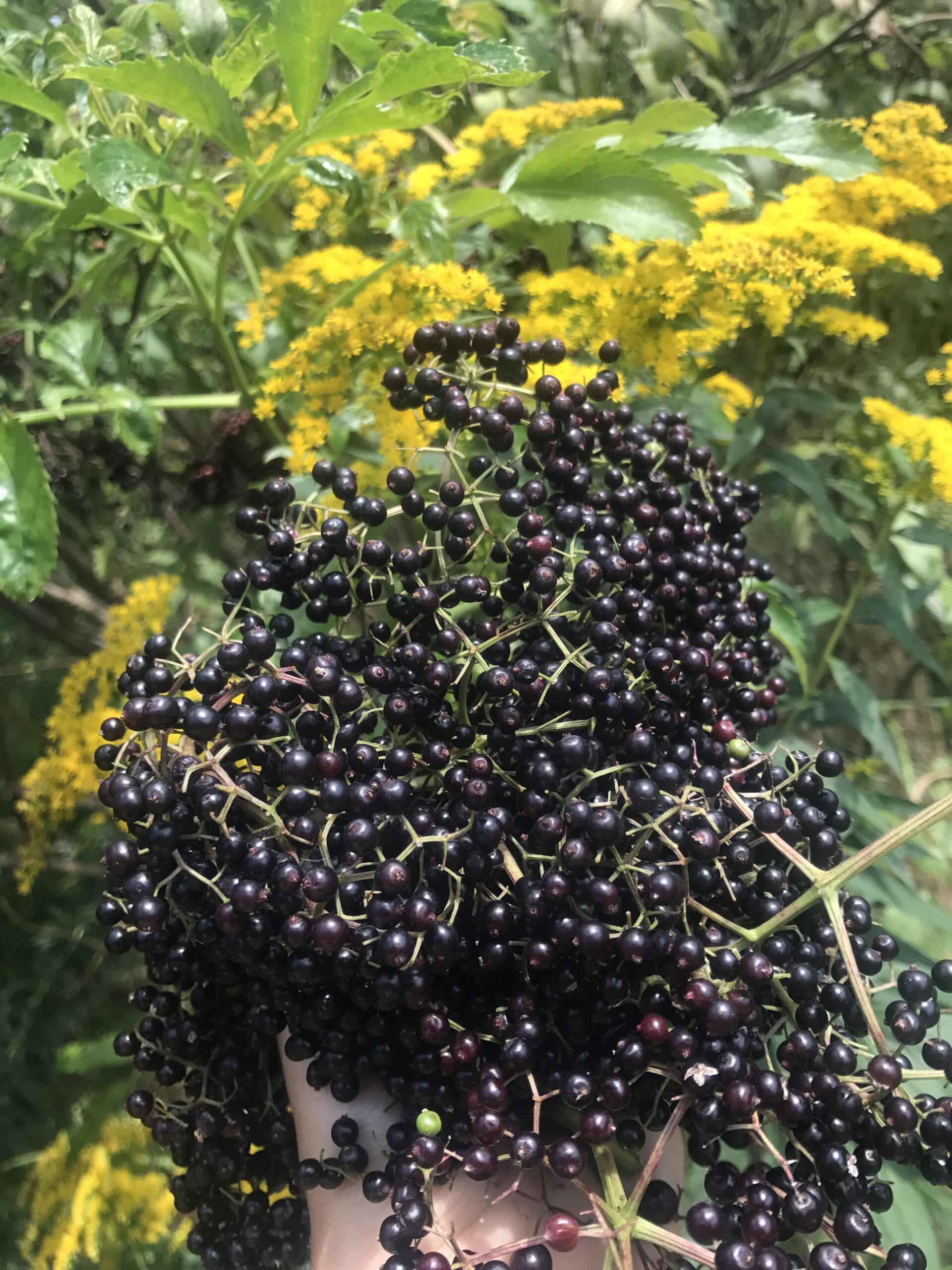 Truly an “elder” of the plant kingdom, fossilized seeds of the American Elderberry have been traced back to eastern North America from as far back as 14,000 BC. Yeah, when wooly mammoths still roamed these parts! For thousands of years, elder was revered as a magical plant, due to its ability to heal and protect human health. This immune-supportive effect is so apparent that, unlike many traditional medicinal plants, modern scientific research has been devoted especially to elderberry. Studies have found that elderberry compounds protect human cells from the entrance and replication of viruses (Torabain, Golnoosh et al “Anti-influenza activity of the Elderberry (Sambucus Nigra)” 2006 p.359). They boost the function and resilience of the immune system, improving our resistance to infection. Should we still get sick studies have shown elderberries also reduce the length of infection (especially from the common cold and flu) and lessen the severity of symptoms such as fever, headache, and congestion. Convinced? Keep dried elderberries on hand to simmer into a tasty purple tea. Make sure to add honey, they’re quite tart on their own. One of the easiest ways to enjoy elderberries is as a syrup. A quick internet search will result in countless recipes or check your local health food store for a bottle of ready-made syrup.
Truly an “elder” of the plant kingdom, fossilized seeds of the American Elderberry have been traced back to eastern North America from as far back as 14,000 BC. Yeah, when wooly mammoths still roamed these parts! For thousands of years, elder was revered as a magical plant, due to its ability to heal and protect human health. This immune-supportive effect is so apparent that, unlike many traditional medicinal plants, modern scientific research has been devoted especially to elderberry. Studies have found that elderberry compounds protect human cells from the entrance and replication of viruses (Torabain, Golnoosh et al “Anti-influenza activity of the Elderberry (Sambucus Nigra)” 2006 p.359). They boost the function and resilience of the immune system, improving our resistance to infection. Should we still get sick studies have shown elderberries also reduce the length of infection (especially from the common cold and flu) and lessen the severity of symptoms such as fever, headache, and congestion. Convinced? Keep dried elderberries on hand to simmer into a tasty purple tea. Make sure to add honey, they’re quite tart on their own. One of the easiest ways to enjoy elderberries is as a syrup. A quick internet search will result in countless recipes or check your local health food store for a bottle of ready-made syrup.
Bye-Bye Virus Tea
Sage, Oregano, Elderberry, Honey Simmer 1 tablespoon of elderberries in 12 ounces of water. Simmer about 20 minutes, to reduce to approximately 8 ounces. Turn off heat and add 2 teaspoons each of sage and oregano. Lid the pot and let steep for 10 minutes. Strain and add honey to taste, enjoying a half cup as needed throughout the day.
A medicine chest awaits us in every spice rack and root cellar if we have but the eyes to see. These six are a wonderful place to begin this winter. Get to know them well. A paragraph simply cannot do a single herb justice! Grab books and read herbal blogs. Interview your grandmother and your farmer. There’s likely more practical knowledge all around you about these unassuming plants than you realize, and countless more ways to lean upon them for healing. But one thing is certain—your creativity and your senses are your very best guides. Fresh herbs are potent, and potent herbs are the most effective herbs. So grow what you can, source the rest organic, use those senses, and enjoy the boundless process of discovery.
Please Note: The information in this article is intended for educational purposes only. Always consult your physician before beginning any herbal protocols.
Please Note:
The information in this article is intended for educational purposes only. Always consult your physician before beginning any herbal protocols.
Western Herbalism is a form of herbalism in development in the US since the 1800s. It’s built specifically upon the herbal medicine tradition transported to the US by herbalists, doctors, midwives, etc. primarily of European descent. Western Herbalism relies significantly on an added scientific element within which we speak in terms of actions, chemical constituents, and rely on clinical studies to substantiate our practice.
Interested in learning more about the practice of herbalism? These resources are a great way to begin:
Additional Resources:
Medical Herbalism: The Science and Practice of Herbal Medicine by David Hoffman
Herbal Foundations by Mary Blue
Making Plant Medicine by Richo Cech
Medicinal Herbs: A Beginner’s Guide and Herbal Recipes for Vibrant Health by Rosemary Gladstar
The Woman’s Handbook of Healing Herbs by Deb Soule
Winter's Herbal Medicine Chest
- Garlic (Allium sativum) – antimicrobial, antiseptic, circulatory stimulant, hypotensive, diaphoretic, expectorant
- Sage (Salvia officinalis) – astringent, antiseptic, antimicrobial, anti-catarrhal
- Onion (Allium cepa) – decongestant, anti-catarrhal, expectorant, hypotensive, cardio tonic, antimicrobial
- Ginger (Zingiber officinalis) – circulatory stimulant, diaphoretic, anti-inflammatory, antibiotic, carminative, antispasmodic
- Elderberry (Sambucus nigra) – immune tonic, alterative, anti-inflammatory
- Oregano (Origanum vulgare) – antiseptic, expectorant, antispasmodic, antioxidant

